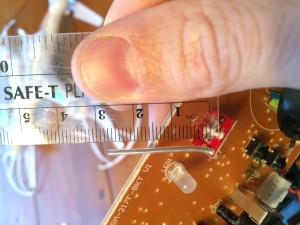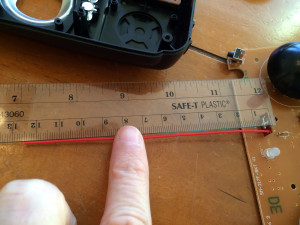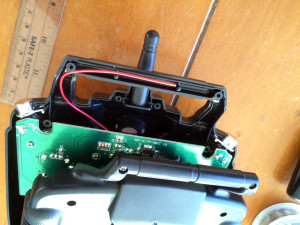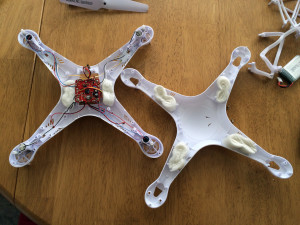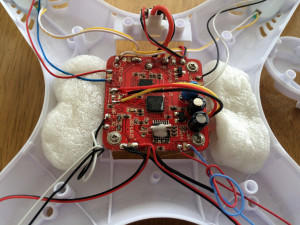Antenna Modification
The antenna that comes with the transmitter is not the correct wavelength. I used a soldering iron to remove the stock antenna and replace it with a 12.5cm wire (a full wave length at 2.4 ghz). I tested the antenna both before and afterward by having someone hold the quadcopter while I walked away from it. The antenna mod easily doubled the range.
Flotation Modification
I saw a sad YouTube video of someone’s new Syma X5C-1 quadcopter sinking into a body of water. I took my quadcopter apart and installed 6 styrofoam packing peanuts. I haven’t crashed into the water to try it out (I hope I never do), but this is cheap/easy insurance that will helpfully keep my investment afloat.
